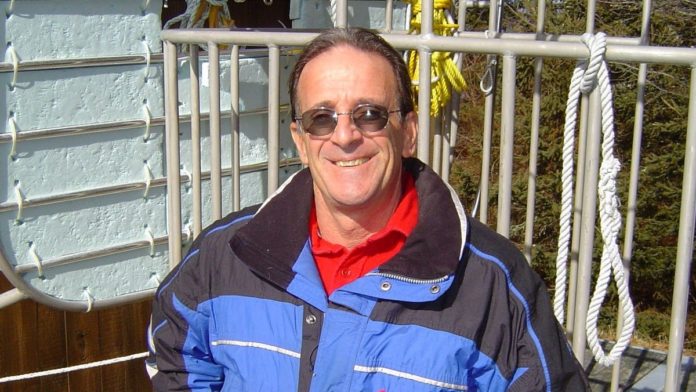| Special to The Journal
The National Oceanic and Atmospheric Administration, in conjunction with Russian scientists, released a study last month that linked warming Arctic temperatures and fish movement. Changing wind patterns and shifting currents brought on by climate change created movement of commercially valuable Alaskan pollock in the Bering Sea.
“To get an accurate assessment of pollock abundance so that resource managers can set sustainable catch limits,” said Robert Foy, NOAA’s Alaska Fisheries Science Center director, “we have to be able to understand pollock distribution, which certainly looks different under a warm-water regime.”
In Rhode Island and Massachusetts, the fish and abundance of fish we catch today are different than the fish we caught 10 years ago because of climate change impacts. Warm-water fish such as black sea bass, summer flounder and scup are here today in abundance. They are now an integral part of my charter business.
Fish like summer flounder moving north have created havoc with allocation issues, particularly in our commercial fishery. Mid-Atlantic boats that have the quota but no fish in their waters have moved up the coast to fish. And New England boats have the fish but little allocation. And the sad news is that cold-water fish such as winter flounder, American lobster and cod have gone to cooler, deeper water north and offshore.
Last month, I participated in an Environmental Defense Fund-sponsored roundtable discussion on “Adjusting fishery management as stocks shift.” The workshop discussed the thorny issue of identifying shifting stock allocation options. The aim of the workshop was to build a consensus on solution directions that can be presented to fisheries decision-makers for consideration, including the development of models that use both geographical shifts and historical catch to establish allocations. Output from the workshop has not been released yet.
When it comes to climate and fisheries, we need to continue doing the management practices we know are key parts of sustainability, like keeping fishing within Allocable Catch Limits, or ACLs, and rebuilding overfished stocks. And we need to make serious progress making our fisheries climate ready with new tools and approaches that are fair and take into consideration both historical catch as well as stock shifts.
We also need to address the root cause of climate change. Renewable energy sources such as onshore and offshore wind farms and solar energy will help us fight climate change. I believe fisheries and responsible offshore wind development can coexist.
The Block Island Wind Farm is living proof. Commercial gill nets are set up in the wind farm area, commercial boats trawl parallel to the wind farm and rod-and-reel commercial and recreational anglers are able to fish right up to the turbine pylons.
Recreational and commercial fishers need to engage in climate change dialogue by participating in allocation discussions at the state, regional and national levels. And, we need to advocate for funding of NOAA, academic and council initiatives to study climate impacts and possible allocation solutions.
“Fishinar Series” on pelagic fishing
There is still time to register for the free Ørsted “Fishinar Series” on pelagic fish that is to continue at 7 p.m. Wednesday, Dec. 9, via Zoom. Learn to target tuna, mahi, sharks and other pelagic fish in the near offshore with Capt. John McMurray of One More Cast Charters; Capt. Charlie Donilon of Snappa Fishing & Diving Charters; and Dick Pastore, expert pelagic fish angler and Rhode Island Saltwater Anglers Association member. Supply Ørsted, a wind farm developer, with valuable input, learn about the reef effect at the Block Island Wind Farm and the fish abundance at European wind farms. Free tickets are available at https://districthallprovidence.org/calendar through the event listing, or visit the Eventbrite registration page.
Where’s the bite?
Tautog, cod and black sea bass. “We were still able to put decent tautog catches together when able to get out this week,” said Capt. Frank Blount of the Frances Fleet. “Pool fish have been between 8 and 10 pounds. Cod fishing was also affected by the ground swell. The scup and sea bass did not care but the cod were keeping a low profile this week.”
Striped bass. Todd Corayer, expert light tackle and fly fishing angler and author (visit www.fishwrapwriter.com) reports catching multiple striped bass in the slot range of 28 inches to less than 35 inches from his kayak in Salt Pond. “I was really taken by the size of the fish this weekend,” he said. “I hope that’s a harbinger of a solid winter on the salt ponds. Blue over silver herring imitation, like an SP Minnow or such [any brand name on my best lure has long been scraped off] with single hooks. In cold water, water was 37 at sunrise, then 41 at 9 a.m., removing a single hook takes far less time for a freezing cold fish gasping for air. Pearl- or minnow-colored plastics, 3 inches or 4 inches on one-eighth- or one-quarter-ounce jig head are killers right now. If that doesn’t work, cast something ridiculous, like gaudy green and pink. You just never know this time of year.” Expert surfcaster Gil Bell said: “Sunday morning was going to be my last outing but I caught and released a nice fat, slot striped bass, so guess I’ll continue into December. I try to fish the predawn hours that coincide with incoming or high tide. Big striped bass enter shallow water under cover of darkness and retreat to deeper water once the glow of sunrise appears.”
Dave Monti holds a captain’s master license and a charter fishing license. He is an RISAA board member, a member of the R.I. Party & Charter Boat Association, the American Saltwater Guides Association and the R.I. Marine Fisheries Council. Forward fishing news and photos to Capt. Dave at dmontifish@verizon.net or visit www.noflukefishing.com.
Credit: Source link






























